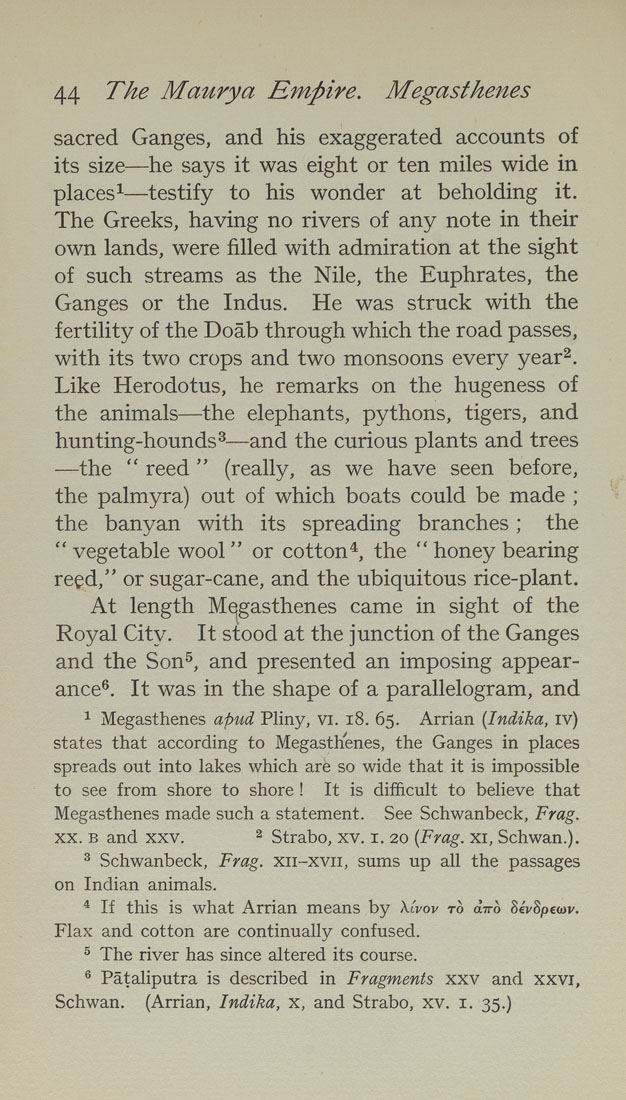44 The Maurya Empire. Megasthenes
sacred Ganges, and his exaggerated accounts of
its size—he says it was eight or ten miles wide in
places^—testify to his wonder at beholding it.
The Greeks, having no rivers of any note in their
own lands, were filled with admiration at the sight
of such streams as the Nile, the Euphrates, the
Ganges or the Indus. He was struck with the
fertility of the Doab through which the road passes,
with its two crops and two monsoons every year^.
Like Herodotus, he remarks on the hugeness of
the animals—the elephants, pythons, tigers, and
hunting-hounds^—and the curious plants and trees
—the " reed " (really, as we have seen before,
the palmyra) out of which boats could be made ;
the banyan with its spreading branches; the
" vegetable wool" or cotton*, the " honey bearing
reed," or sugar-cane, and the ubiquitous rice-plant.
At length Megasthenes came in sight of the
Royal City. It stood at the junction of the Ganges
and the Son^, and presented an imposing appear¬
ance®. It was in the shape of a parallelogram, and
^ Megasthenes apud Pliny, vi. i8. 65. Arrian {Indika, iv)
states that according to Megasthenes, the Ganges in places
spreads out into lakes which are so wide that it is impossible
to see from shore to shore ! It is difficult to believe that
Megasthenes made such a statement. See Schwanbeck, Frag.
XX. B and xxv. ^ Strabo, xv. i. 20 {^rag. xi, Schwan.).
^ Schwanbeck, Frag, xii-xvii, sums up all the passages
on Indian animals.
* If this is what Arrian means by \ivov to uTro SeVSpewv.
Flax and cotton are continually confused.
^ The river has since altered its course.
^ Pataliputra is described in Fragments xxv and xxvi,
Schwan. (Arrian, Indika, x, and Strabo, xv. i. 35.)
|








